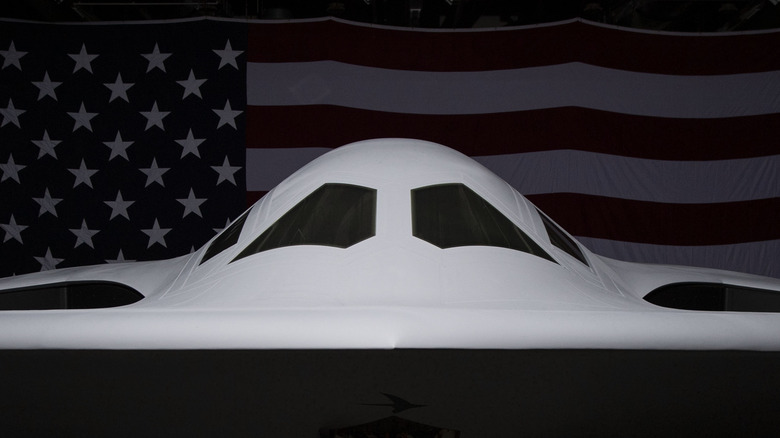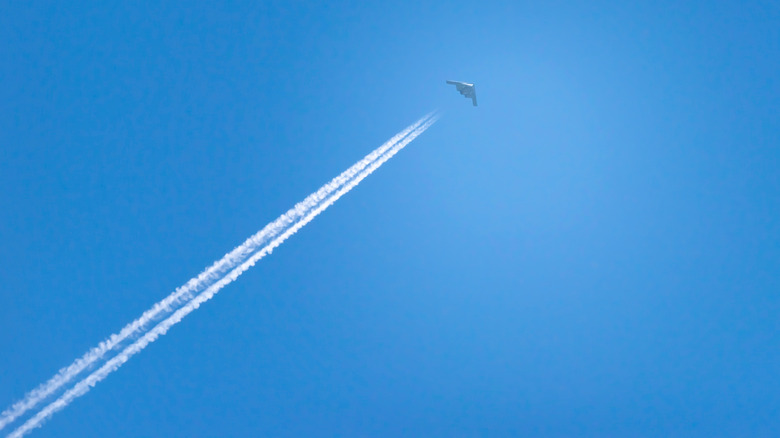The One Big Problem With Stealth Planes Scientists Can't Fix
Even people who aren't experts in aviation technology are often able to pick out stealth aircraft when they see one. There's something distinctive about the unlikely jagged edges and dark metallic facades that captures the imagination. Overall, the designers and users of these aircraft don't especially mind this fact, because modern stealth technology isn't really meant to make things less visible to the naked eye. It's meant to make things less visible to radar, infrared, and other sophisticated detection methods.
Under ideal circumstances, stealth aircraft would be nearly impossible to see with your eyes under operational conditions. They have a tendency to fly at extremely fast speeds and high altitudes, which means they're not realistically any more likely to be detected by a person on the ground than a spy satellite. However, ideal circumstances are not always available.
In this way, the most persistent enemies of stealth aircraft are not rival nation-states, but weather conditions. Ambient temperature and humidity can conspire in the wake of a passing plane to create condensation trails — frequently shortened to "contrails" — which may as well be skywriting messages that say, "There's a stealth plane at the end of this line!" For military applications, this is vexing at best, and can otherwise be perilous.
An ounce of prevention
Stealth aircraft have been so far unable to prevent contrails from forming behind them for the same reason that you'd be unable to stop your breath from becoming visible in the cold winter air. According to Scientific American, the exhaust expelled by jet engines is hot and humid — much like your breath — and in the cold, low-pressure upper atmosphere, the water vapor in the exhaust freezes in a similar process to natural cloud formation.
As reported by Popular Mechanics, the U.S. military has experimented with everything from turbulence-inducing jet nozzles to dosing the exhaust with acid in their quest to permanently eliminate contrails, but all to no avail. Instead, the next best solution was to try and predict what conditions would lead to contrails and then avoid flying in that airspace, opting instead to go above or around. Other technologies, ranging from laser beams to rearview mirrors (yes, really) have been employed to help aircrew quickly detect contrail formation so they can make adjustments on the fly.
Of course, the furthest limits of technological achievement — particularly where national defense is concerned — aren't likely to be made immediately public. Advanced stealth aircraft such as the B-21 Raider might be equipped with secret contrail prevention technology years ahead of anything else. But, because contrail formation contributes more to climate change than the actual burning of jet fuel itself, we hope that such a breakthrough would quickly make its way to the private sector to clear away those cloudy skies.

